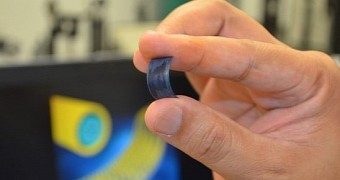You've probably heard before about wonder battery technologies that promise to offer many days of use and short charging times, but none of them have seen the light of day yet.
Battery technology news might be very exciting, but the actual battery technology that it's now used in smartphones is nothing to be excited about.
A team of UCF scientists have just announced that they have been able to develop a new process for creating flexible supercapacitors that can store more energy and be recharged more than 30,000 times without degrading.
Some of you probably know that after more than a year of use, a smartphone's battery starts to degrade, thus it can hold a charge less and less time until you must either change the battery or switch to another smartphone.
Well, according to this group of scientists, if these supercapacitors were used instead of batteries inside smartphones, they will charge in mere seconds and will offer more than a week of use before needing another charge.
The newly developed supercapacitor is composed of nanometer-thick wires coated with shells of two-dimensional materials like graphene.
While this technology based on two-dimensional materials is well-known among scientist, there have been problems in the way people incorporate these two-dimensional materials into the existing systems.
“Not ready for commercialization”
The good news is the group of scientists have managed to develop “a simple chemical synthesis approach so we can very nicely integrate the existing materials with the two-dimensional materials.”
These supercapacitors that make use of the new materials could be used in smartphones, as well as other electronic gadgets, and electric vehicles that could benefit from sudden bursts of power and speed.
On top of that, since they are very flexible, it would definitely help with major advancements in the wearable industry as well.
Unfortunately, according to Yeonwoong “Eric” Jung, an assistant professor with joint appointments at the NanoScience Technology Center, the new technology is “not ready for commercialization, but this is a proof-of-concept demonstration, and our studies show there are very high impacts for many technologies.”

 14 DAY TRIAL //
14 DAY TRIAL //